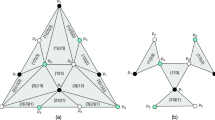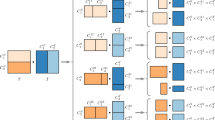Summary.
Hot-potato routing is a form of synchronous routing which makes no use of buffers at intermediate nodes. Packets must move at every time step, until they reach their destination. If contention prevents a packet from taking its preferred outgoing edge, it is deflected on a different edge. Two simple design principles for hot potato routing algorithms are minimum advance, that advances at least one packet towards its destination from every nonempty node (and possibly deflects all other packets), and maximum advance, that advances the maximum possible number of packets.
Livelock is a situation in which packets keep moving indefinitely in the network without any packet ever reaching its destination. It is known that even maximum advance algorithms might livelock on some networks. We show that minimum advance algorithms never livelock on tree networks, and that maximum advance algorithms never livelock on triangulated networks.
Similar content being viewed by others
Author information
Authors and Affiliations
Additional information
Received: March 1999 / Accepted: August 1999
Rights and permissions
About this article
Cite this article
Feige, U., Krauthgamer, R. Networks on which hot-potato routing does not livelock. Distrib Comput 13, 53–58 (2000). https://doi.org/10.1007/s004460050005
Issue Date:
DOI: https://doi.org/10.1007/s004460050005




